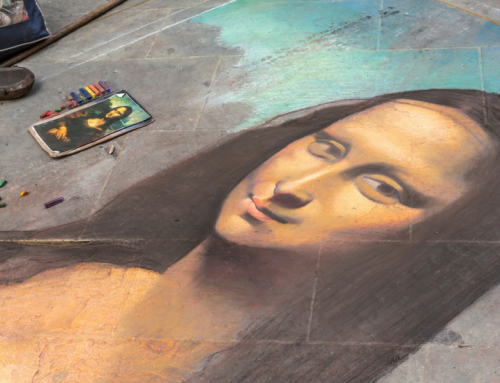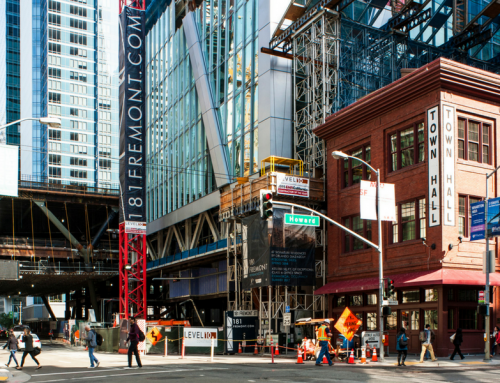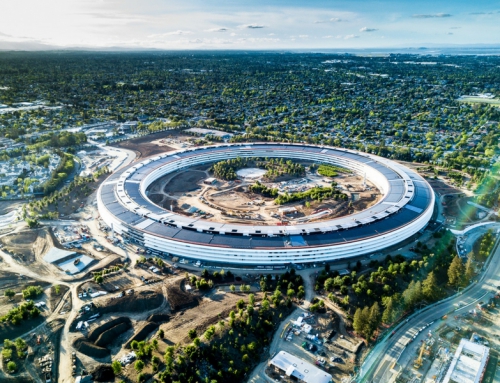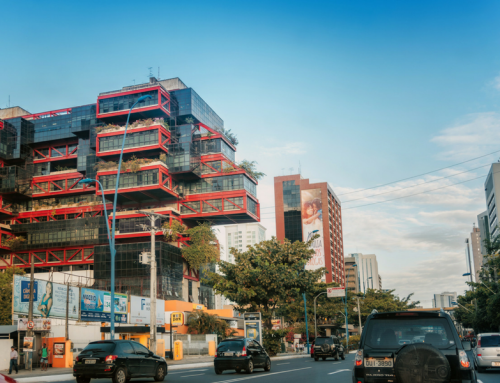New Transbay Transit Center becomes a hub for all things to all people.
“At a modest five stories tall,” writes Curbed SF, “instead of soaring up it’s growing out, 1,400 feet from one end to the other, like a concrete giant decided to lie down for a nap between Beale and Second Streets.”
That’s a full four city blocks—a concrete giant, indeed.
Begun in 2012, Transbay Transit Center is one of the largest construction projects in the country. Budgeted at $1.9 billion, the project will end up costing $2.2+ billion. A dozen transit agencies will connect with the building, and 100,000 passengers are expected to pass through the transit hub each day, 45 million per year.
The new Transbay, designed by the Connecticut firm Pelli Clarke Pelli Architects, is a drastic change from its predecessor. Built in 1939, writes Curbed SF, “the original Transbay Terminal was a Depression-era artifact—and quite a depressing piece it was by the end of its life, run down and seeing only a fraction of its former volume of commuters.
“The new project wants to be all things to all people: not just a bus and train station, but also an architectural display far removed from the hunkered-down concrete design of the old building, a treatise on innovation as the planned terminus for the state’s high-speed rail project, a Union Square-grade retail hub South of Market Street, and a centerpiece for South Beach as a neighborhood.”
For many folks, the new transit hub has created a neighborhood all its own, the Transbay District. Curbed SF quotes Transbay facilities manager Martha Aragon Velez: “It’s an entirely new neighborhood,” she says. “How often does a city get to do something like that?”
Far from a straightforward concrete mass, the transit hub boasts a 5.4-acre park on top, a novelty for the industry. Designed by PWP Landscape Architects, the park is “a wide-open perch above the streets, giving visitors a place from which to confront and relate to the changing skyline.” The park will include restaurants, a playground, and an amphitheater for concerts.
The innovations used in Transbay’s design and construction are numerous and extraordinary. For example, the two cranes used in construction—134-feet tall and 670,000 pounds—themselves took multiple days to construct, each from one hundred separate parts. Here’s another: to make the structure both seismically sound and to accommodate the weight of the mountains of soil needed for the rooftop park, inflexible building foam makes up most of the park’s foundation. Also, nearly all the concrete from the original Transbay was recycled.
On transbaycenter.org, a series of videos called “Faces of Transbay” highlight some individuals who have worked on the transit hub. When asked about her favorite aspect of the project, Monique Hawn, superintendent for Turner Construction, said, “Its enormity. Seeing behind the scenes what it takes—all the engineers and project managers coming together, all these people, their vision, and what it takes to do a project like this.”
“Most people don’t know all the little pieces that have to come together to get the workers in the field to build it.”
More than 700 of those workers are on site every day.
As a superintendent, Hawn has been responsible for Transbay’s community outreach. She works with nearby businesses and residences to lessen the project’s impact on the surrounding community. For Hawn, working with the community has been one of the more rewarding aspects of the job.
Asked about being a woman in the field, Hawn offered encouraging words:
“It’s changed a lot. There are old timers who struggle with you. But for the most part, it’s how you carry yourself. You respect people, you treat them well. As a superintendent, my role was to take the roadblocks out of the guys in the field’s way. As long as you’re helpful and just treat people well, it’s an awesome industry. I love it.”
Hawn offered these final thoughts on her role in the five-year journey building Transbay:
“Someone had this vision long before I even knew about this project. I get to be a part of that vision. When I’m old and walk by this project, I’ll be able to say I made a difference.”






